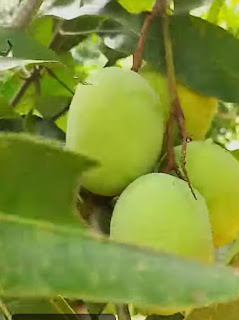Raw Mango vs Ripe Mango for Diabetic Patients: What’s the Better Choice?
As mango season arrives, many diabetic patients face a common dilemma: Is it safe to eat mangoes? And if yes, should they choose raw or ripe mango? This question often arises because mangoes, especially ripe ones, are known for their sweetness, which can raise blood sugar levels.
Understanding the glycemic index (GI) of mangoes is key to answering this. The glycemic index measures how quickly a food raises blood sugar after consumption. Generally, foods with a lower GI are better for diabetic patients as they cause slower, more controlled rises in blood glucose.
How Ripening Affects Mango’s Glycemic Index
When mangoes ripen, the starch inside them breaks down into simple sugars like glucose, fructose, and sucrose. This natural conversion increases the sweetness but also raises the mango's GI.
-
Raw mango GI: Typically ranges from 41 to 55
-
Ripe mango GI: Usually ranges from 51 to 60
Since raw mango has less sugar and a lower GI, it causes a slower rise in blood sugar compared to ripe mango. This makes raw mango a safer and more diabetic-friendly option.
Nutritional Benefits of Mangoes for Diabetics
Besides their glycemic index, mangoes provide antioxidants, vitamins (like vitamin C and A), and dietary fiber, which can support overall health and help manage diabetes when consumed in moderation.
Top FAQs About Mango Consumption and Diabetes
1. Can diabetic patients eat ripe mango at all?
Yes, but in limited quantities and preferably combined with foods high in fiber or protein to reduce blood sugar spikes.
2. Is raw mango better than ripe mango for diabetes control?
Generally, yes. Raw mango has a lower glycemic index and less sugar, making it a better choice.
3. How much mango can a diabetic person safely consume?
Portion control is essential. A small serving (about ½ cup) of raw mango is advisable, while ripe mango servings should be even smaller.
4. Does mango juice affect blood sugar differently?
Yes, mango juice usually has a higher GI than whole mango fruit and lacks fiber, leading to faster blood sugar spikes.
5. Are there any other fruits better suited for diabetics than mango?
Yes, fruits like berries, apples, pears, and guava are often recommended due to their lower glycemic index and higher fiber content.
Conclusion
For diabetic patients, the choice between raw and ripe mango is important. Raw mangoes, with their lower glycemic index and reduced sugar content, are generally safer for managing blood sugar levels. However, moderate consumption and portion control are crucial regardless of the mango’s ripeness. Including mangoes as part of a balanced diet rich in fiber and protein can help maintain holistic health while enjoying the seasonal fruit. Remember to always monitor your blood sugar response and consult with your healthcare provider for personalized advice.


%20Foods%20That%20May%20Ease%20Your%20Pain.jpg)



%20Benefits,%20Uses,%20and%20Everything%20You%20Need%20to%20Know%20-%20Healthy%20Roots%20&%20Habits,%20Healthy%20Roots%20&%20Habits%20Blog.jpg)
%20Benefits,%20Nutrition,%20Side%20Effects,%20and%20How%20to%20Use.jpg)




No comments:
Post a Comment